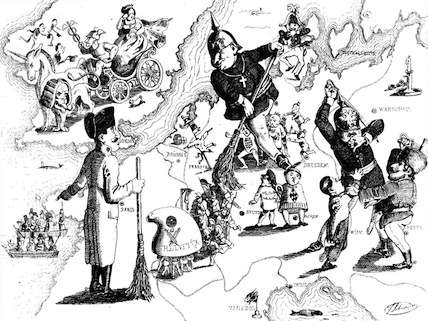Revolutionary Mice and Repressive Cats
Dissident movements learn from one another; so do the regimes they protest.


Dissident movements keep an eye on protests in other parts of the world, seeing which tactics seem to be working and then copying them at home. The governments being protested do the same thing, watching one another and imitating the most effective means of repression. And as this goes on, both the rebels and the rulers keep adapting, in what Jay Ulfelder calls "a bunch of interconnected games of cat and mouse, all happening at the same time":
Within each domain, each family of mice is busily trying to outwit its own cat, and each cat is diligently trying to catch its own mice. All the while, though, the cats and the mice are learning from what happens everywhere else—sometimes just by watching, but other times by talking and conspiring and even lending a hand. Often that aid passes from mouse to mouse or cat to cat, but sometimes it's the cat in one arena lending a hand to the mice in another, and vice versa. As communication and international organization get easier, the whole process only thickens and accelerates.
That's from a long, illuminating blog post in which Ulfelder, a political scientist, draws on everything from the color revolutions of the mid-oughts to the Occupy encampments of 2011. "For the sake of convenience (and, perhaps, sanity), social scientists usually think of the phenomena we study as occurring in independent 'cases,' which can be analyzed, compared, and contrasted as distinct and largely independent episodes," Ulfelder notes. "This independence, however, is often an illusion born of our need to simplify in order to understand. That's especially true for phenomena that involve rapid and deliberate imitation and adaptation." To see a suggestive effort to draw those not-so-independent cases together, you should read the rest of his post.
(Note: His post is from 2012. Still relevant in 2017, though.)


Show Comments (7)